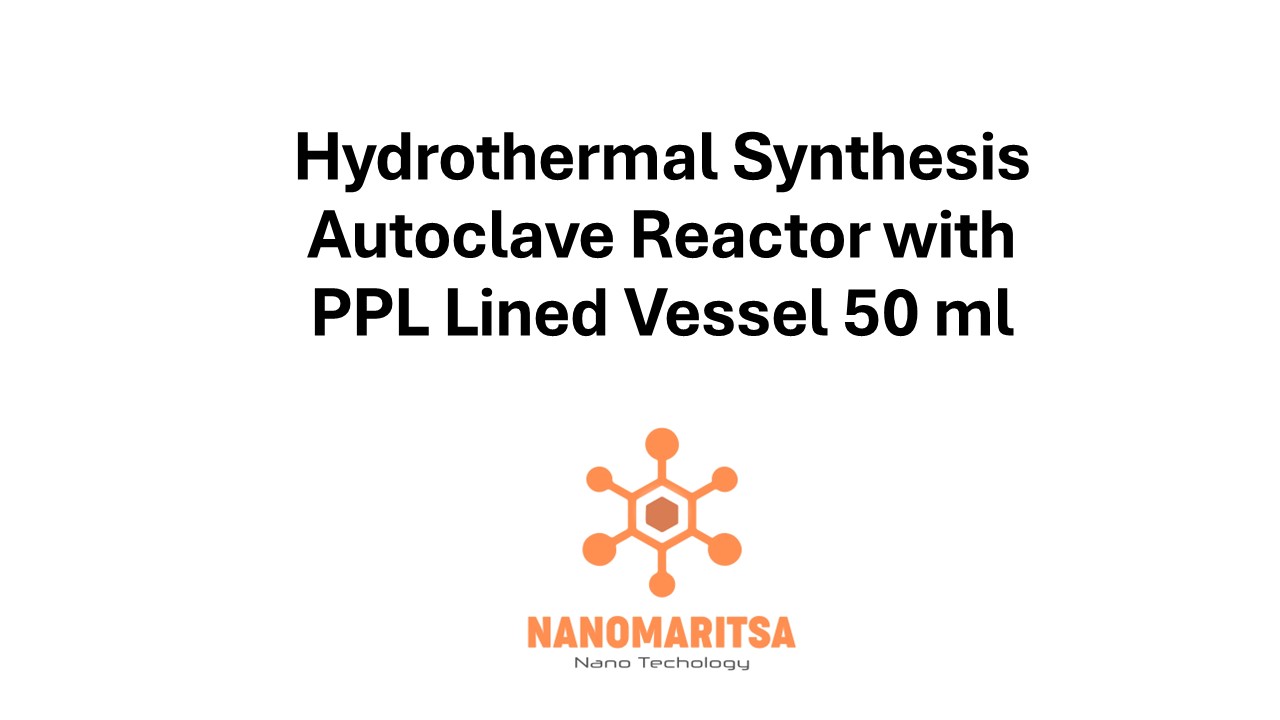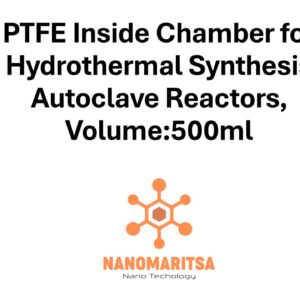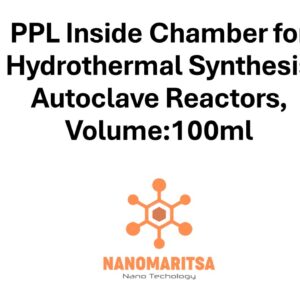Hydrothermal Synthesis Autoclave Reactor with PPL Lined Vessel 50 ml
€256.00
CompareHydrothermal Synthesis Autoclave Reactor with PPL Lined Vessel (50 ml) is a laboratory device used for conducting hydrothermal synthesis reactions under controlled high-pressure and high-temperature conditions. The autoclave reactor is designed to facilitate chemical reactions that require these extreme conditions, commonly used in material synthesis, such as nanomaterials, crystals, and other advanced materials. Below is an overview of its key features, properties, applications, and safety considerations:
1. Key Features:
- PPL Lining: The reactor features a PPL (Polyphenylene Sulfide) lined vessel, a material known for its excellent chemical resistance, high thermal stability, and durability under extreme conditions. PPL is suitable for hydrothermal synthesis reactions that involve highly reactive or corrosive chemicals, ensuring that the vessel does not react with the reactants inside, preserving the purity of the synthesis.
- Volume (50 ml): The reactor has a 50 milliliter (ml) vessel size, making it ideal for small-scale laboratory experiments where only a small amount of material is needed. This volume is well-suited for research and prototyping applications.
- Pressure and Temperature Resistance: The reactor is designed to withstand high pressures (200-300 bar) and high temperatures (150°C to 250°C), which are essential for driving hydrothermal reactions that occur within this pressure-temperature range.
- Sealed Environment: The PPL-lined vessel is securely sealed inside the autoclave reactor, maintaining a controlled environment for the reaction to take place. This sealed setup is essential for achieving the desired reaction outcomes by maintaining consistent temperature and pressure conditions.
2. Properties:
- Chemical Resistance: PPL is highly resistant to a wide variety of chemicals, including acids, bases, and solvents. This ensures that the material inside the vessel will not interact with the chemicals involved in the hydrothermal synthesis process.
- Thermal Stability: PPL exhibits high thermal stability, capable of withstanding temperatures up to 250°C without degradation, making it suitable for high-temperature reactions.
- Mechanical Strength: PPL offers good mechanical strength, which is important for maintaining the integrity of the vessel under high-pressure conditions.
- Non-reactivity: The PPL lining is non-reactive with most chemicals, preventing contamination of the reaction and ensuring the purity of the synthesized material.
3. Applications:
- Nanomaterial Synthesis: The reactor is used for the synthesis of nanoparticles, nanowires, and other nanomaterials. It is particularly useful for producing materials used in electronics, sensors, energy storage devices, and biomedical applications.
- Crystal Growth: Hydrothermal synthesis is an effective method for growing high-quality single or polycrystalline materials, including metal oxides, semiconductors, and other inorganic compounds. The PPL-lined vessel provides a stable environment for crystal growth under controlled conditions.
- Catalysis: The reactor can be used to synthesize catalytic materials or modify existing catalysts. The high pressure and temperature conditions promote the creation of catalysts with enhanced activity or selectivity for chemical reactions.
- Energy Materials: The reactor is widely used for the synthesis of energy-related materials, such as electrodes for batteries, supercapacitors, and fuel cells. These materials benefit from the controlled conditions provided by the hydrothermal synthesis process.
- Environmental Applications: The reactor is also useful for the development of materials for pollution control, water purification, and environmental remediation, such as catalytic converters or advanced filtration materials.
4. Handling and Safety:
- Toxicity and Corrosiveness: Although PPL is chemically resistant, some of the chemicals used in hydrothermal synthesis reactions can be hazardous or toxic. Proper precautions should be taken when handling these materials, including using compatible reagents and proper protective equipment.
- High Pressure and Temperature Safety: The reactor operates under high-pressure and high-temperature conditions, which can be dangerous if mishandled. It is essential to follow the manufacturer’s instructions and ensure that the reactor is properly sealed and inspected for damage before use. Always use safety protocols and equipment.
- Storage: After use, the reactor should be carefully cleaned to remove any residual chemicals. Store the reactor in a cool, dry place, away from extreme temperatures or sunlight to ensure its longevity and prevent degradation of the PPL lining.
- Precautions: Always wear appropriate personal protective equipment (PPE), such as gloves, goggles, and lab coats, when handling the hydrothermal reactor. Ensure that the work is conducted in a well-ventilated area or under a fume hood, especially when working with volatile or toxic chemicals.
Summary:
The Hydrothermal Synthesis Autoclave Reactor with PPL Lined Vessel (50 ml) is a key piece of equipment for conducting small-scale hydrothermal synthesis reactions under controlled high-pressure and high-temperature conditions. Its PPL lining offers superior chemical resistance, thermal stability, and mechanical strength, making it ideal for a wide range of chemical reactions and material synthesis, including nanomaterials, crystals, catalysts, and energy storage materials. The 50 ml volume is suitable for laboratory-scale experiments, making it an invaluable tool for research, prototyping, and small-scale production of advanced materials.
| Pieces | 1 Piece, 5 Pieces |
|---|






